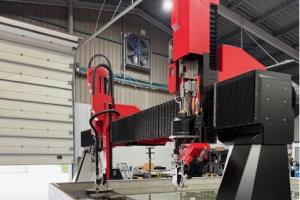Aerospace: Sector set for continued growth – provided suppliers can capitalise

THE UK’s civil aerospace industry is likely to experience growth for many years to come, fuelled by massive orders for new airliners, experts in the sector have said.
The prediction is essentially good news for the supply chain feeding into the likes of Airbus, Boeing and Rolls-Royce but component firms have to be at the peak of their game to ensure they can continue to capitalise.
This means they must continue to impress the OEMs (Original Equipment Manufacturers) with the quality of their goods, convince lenders they have sufficient clout in order to secure finance and maintain a plentiful supply of skilled labour.
The latter is especially important when many indicators suggest that a shortage of suitably-qualified skilled labour could thwart the growth ambitions of many firms – and not just those operating in the aerospace sector.
This means dedicated apprenticeship programmes and support from government and the academic sector in promoting the importance of STEM (science, technology, engineering and maths).
Tim Lake, Lead Partner, DLA Piper said the fleet replacement programme by the major airlines would continue to provide such opportunities for some time to come.
“The estimated backlog of orders for Boeing and Airbus is between six to seven years. This translates to something like 27,000 to 30,000 new aircraft between now and 2030 so clearly there are many opportunities still available – in fact we can’t produce aircraft quickly enough at the moment,” he said.
“This means it is a massively positive space to be in – I would struggle to point to any other sector that offers that level of demand – and those of the just the statistics for Airbus and Boeing.
“Given the way the world is shrinking and the thinking around the likely uptake in demand for air travel in the longer term then even past 2030 there is unlikely to be a significant drop-off in the aerospace sector.”
As emerging economies continue to find their feet then new phases of demand are likely, he added.
All this week TheBusinessDesk.com has joined forces with DLA Piper, Santander and Finance Birmingham to assess the manufacturing strength of the aerospace supply chain in the Midlands.
We are joined by The University of Birmingham, which is spearheading pioneering research into the sector and which has underlined its commitment to the industry’s future with a new joint venture agreement with Rolls-Royce to create the £60m High Temperature Research Centre at Ansty Park in Coventry.
To read a copy of our special supplement click on the banner below.
Charles Garfit, head of Manufacturing at Santander Corporate and Commercial Banking, said the aerospace sector was responsible for 200,000 jobs in the UK and was a major employer within the manufacturing sector. It is also a major contributor to GDP because a lot of what is produced goes for export, either directly or indirectly.
“The indicators are that this is a sector that will only continue to grow. We remain very positive about that and the long term projections are good. Why? People are wanting to trade and travel overseas so new opportunities continue to present themselves,” he said.
“It is also a sector that is counter-cyclical. When things are going well everyone wants to travel and when things are not, there is a focus on costs and reducing them.”
He said the main drivers for growth were demand within the markets of Asia and South America plus other factors such as a drive to improve efficiency, the need for quieter means of travel and the development of the private jet market.
He said supply chain companies had to meet the needs of the larger OEMs and they had to do more to ensure risk was more evenly spread.
To read more on this issue download a copy of our special supply chain supplement.











